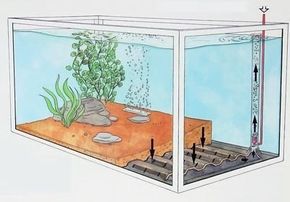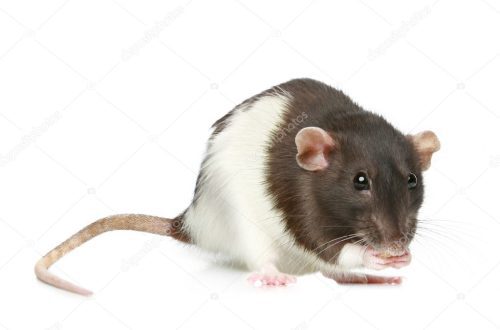
What is a bottom filter for an aquarium, how does it work
A bottom filter is a water purifier that is used in aquariums of various sizes. In another way, it is called “false bottom”. Water is purified in a natural way, that is, through the ground. With this method, all debris remains on the surface of the soil, which is regularly washed.
Contents
What is a bottom filter
The design of this filter is quite unusual and consists of the following elements:
- Thin plate with small holes.
- Pump for pumping water from under the plate.
- Tube system.
The tubes are laid on the bottom of the aquarium, a plate is laid on top, and then a layer of soil (pebbles or small pebbles).
In no case should sand or fine soil be used, because they will clog the holes through which the water flow circulates.
The principle of operation of the bottom filter
False works according to the following principle:
- With the help of a pump, water is pumped out from under the ground.
- They clean it and then return it back to the aquarium. In this case, the cleaning material is special elements for filtration or directly the soil.
- After that, the water begins to seep through the soil again and everything starts anew.
It is necessary to consider in more detail the principle of its work.
Bottom filter installation
First, water is drained from the aquarium along with the fish into a separate container and rinsed with warm water. Also, the soil is washed in warm water to remove the remaining silt. Attached to the plate pump with mechanical cleaning cartridge, and then the filter plate is placed on the bottom of the aquarium. Then the mesh is installed on the supporting elements and the tubes are fixed, which ensure the movement of water through the pump.
If the design provides for a filler, it should be installed. The organic matter that gets into it undergoes mechanical filtration. Large particles of silt enter it in very small quantities, due to the size of the gaps between the soil. Small organics are well processed by bacteria.
The tube through which the water flows attached to the wall of the aquarium using suction cups or special attachments. The water flow from the tube should flow out in the form of a fountain, this additionally saturates the water with oxygen.
A pump with a cartridge for mechanical cleaning is masked with a layer of soil. The filter mesh is first filled with the largest particles of soil, then fine ones. The mesh should be moved to the walls of the aquarium so that the fish that dig the ground do not fall under it.
After that, the aquarium is filled back with pumped out water, plants are planted and fish are released.
The bottom filter is mainly used in small aquariums, because in this case its installation is not very difficult. Once every few months, it is thoroughly cleaned and washed.
When installing such a filter, one should take into account the fact that some aquarium plants do not tolerate the constant movement of water at their roots. In addition, the roots of plants regularly receive oxygen, and this does not happen in natural conditions.
Nutrients accumulate in the soil, which feed on the roots of various underwater plants, and constant filtration can wash them out. Because of this, bottom filters should not be installed in aquariums with rich vegetation.
Bottom filter filtration types
The standard filter performs mechanical and biological water purification.
Biological filtration is essential for water purification, because in this case, compounds are removed from it, which are formed during the breakdown of organic matter by bacteria. The bottom filter provides a high level of biological water purification. In order for it to be cleaned more efficiently, fillers are used that increase the area of formations of bacterial colonies.
During mechanical filtration, soil is involved, on the surface of which particles of silt settle, subsequently penetrating into the cavity under it.
Advantages of the bottom filter
This filter has certain advantages:
- With its help, the circulation of water in the aquarium occurs continuously.
- Passing through the ground, the water does not linger there for a second.
- Constant water movement does not allow the aquarium to quickly become dirty and prevents various infections from appearing.
- Such a false bottom is completely invisible under the plate.
- An optimal microclimate is created for fish.
Bottom Filter Disadvantages
In addition to the benefits false bottom also has disadvantages:
- The surface of the ground still contains dirt and large debris that cannot pass.
- Debris clogs the holes in the tubes very quickly. To clean them, all the water is poured out of the aquarium and the structure is dismantled.
- It is not recommended to install in aquariums where a lot of algae grows.
The bottom filter cleans water well from various impurities. To acquire it, you need to think carefully, because it has both advantages and disadvantages.





